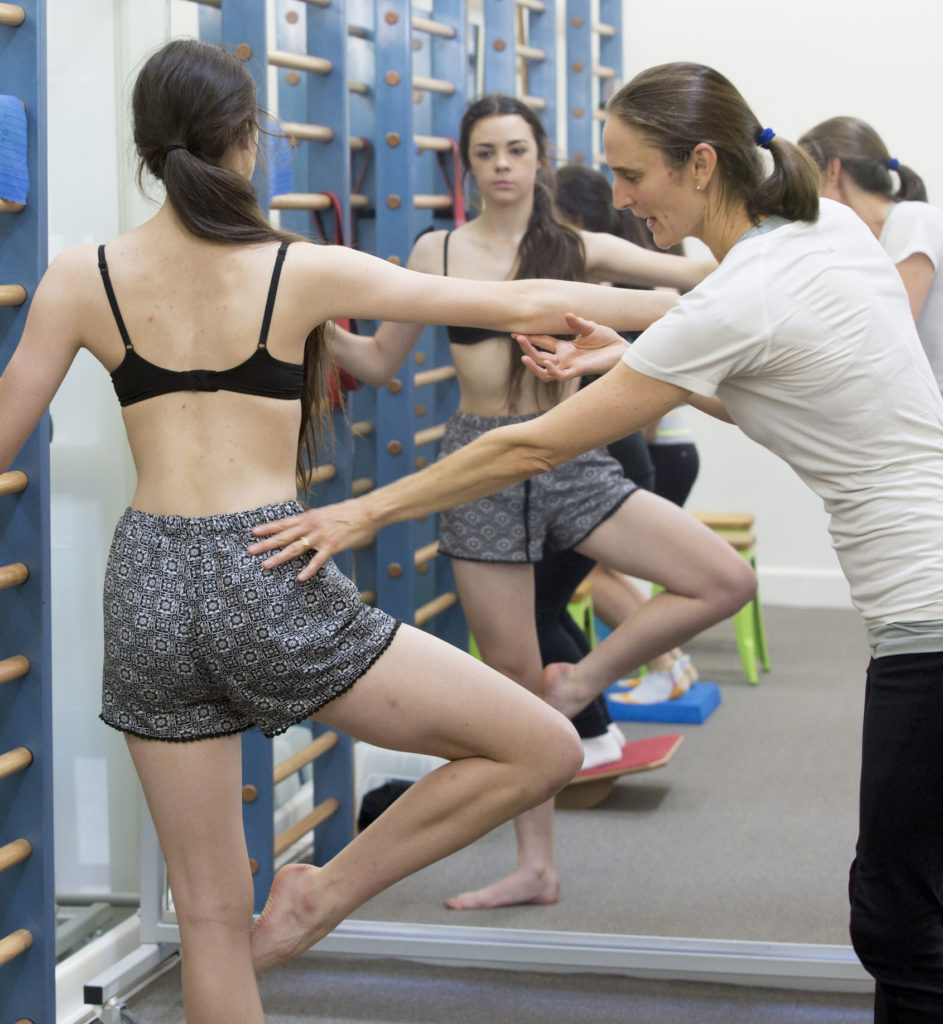Physiotherapy Scoliosis Specific Exercises (PSSE)
Physiotherapy Scoliosis Specific Exercises form an important part of our approach to managing scoliosis.

PSSE is the acronym for Physiotherapy Scoliosis Specific Exercises, but it does not just mean any exercises given by any physiotherapist. It refers specifically to the exercises taught from recognised international scoliosis training schools (recognised by SOSORT – the International Society on Scoliosis Orthopaedic Rehabilitation Treatment) as sharing the following core treatment principles:
- Education
- Active-correction in 3D
- Stabilisation of the corrected posture
- Transference into ADL (Activities of Daily Living).
All our physiotherapists are PSSE trained by the BSPTS Rigo Concept, one of the SOSORT recognised scoliosis training schools.
The ultimate objective of our PSSE sessions, is to teach you how to lift yourself up out of your scoliotic posture and towards your best possible 3D alignment and shape. We want this ‘self-correction’ that you learn, to be an ‘efficient’ one, so this means one that trains the muscle recruitment patterns and neurological pathways in a way that it is accepted and sustainable in your upright life.
Learning your individual ‘path of 3D correction’ that exists in you, involves learning about movements and countermovement’s, forces and counterforces, that act in a combined and simultaneous way within and between the scoliotic regions and compensatory regions. We know it sounds complex (and well… um… it is) but this is our specialty, and we will teach it to you in a way that is understandable, smooth and achievable. There is the general agreement worldwide that ‘hanging in’ your scoliotic posture can sometimes feed into its progression, so we want to teach you how to arrive at a new, habituated and more symmetric postural norm.
There are soft tissue restrictions that want to keep you in your scoliotic posture, that will need to be addressed, and there is the fact that your mind had become used to your scoliotic posture, so that when you are moved into an improved, more well aligned posture, it feels strange to you. Our exercises and techniques work to address restrictions, improve postural endurance muscle strength and efficiencies of action, and redefine the brains body schema to accept your ‘self-corrected’ posture as your ‘new’ daily posture in all your activities of daily living.
Scoliosis is a torsional condition that leads to sections of the spine and trunk turning and shifting. Some areas become more expanded (prominences) and others become more closed (concavities). As scoliosis initiates and continues to develop, it is detected by the body (without us even consciously knowing it) and the body cleverly comes up with compensations in other body regions (taking them to the opposite ‘counter’ direction), so that we may be able to maintain overall balance and continue moving around in our upright life.
In the sessions, you learn how to de-collapse and expand the closed sections of your torso, considering the 3-dimensional requirements (left or right rotations and translations as well as forward or backward translations). The physiotherapist utilizes a variety of cues and techniques to bring you to a more symmetric positioning in space (of the body regions) and to also improve the shape of those regions (ribcage, waist etc). They will work to have you develop the endurance ability to maintain it in both static postures (sitting, standing) and dynamic postures (walking, reaching, lifting and any other activities in your daily life including sports, hobbies, gardening, specific work postures).
If relevant, you may have discussions about workstation ergonomics, sleeping positions and schoolbag and backpack use.
In our sessions we also address any imbalances in muscle lengths or weaknesses found around the hips and shoulder region. Most of our physiotherapists are additionally trained in Pilates so we will select from our wide-ranging skill set, which ever exercises we feel are best to achieve your needs and goals.
Supporting you in establishing a regular home exercise routine is important. This is required to ensure the therapeutic effects of the exercises are able to be achieved and habituated into daily activities. Throughout our training, we may use your phone to take photographs of the setup of some of your exercise positions and we also take voice recordings of us coaching you through each exercise, so that you may play it at home whilst doing the exercise and virtually have us ‘with you’ reminding you of the specifics and ensuring you do the exercise to its completion.
We really try to set you up so that you are able to continue with what you have learnt independently at home.
Our sessions need to be private sessions initially as every body’s presentation is highly individual so you need to learn the specifics for you first. Some people choose to continue with the flexibility and high attention of private sessions while others may choose to join one of our group classes instead.
Working in a group is a great opportunity to meet others with scoliosis. Psychologically this has great benefits in reducing anxieties and normalising scoliosis – many people have structural scoliosis; however, the many people don’t know the many people! Our group training is a great way to help you stick with your exercises and is fun! You need to speak with your physiotherapist to see if you have covered enough private tuition concepts to have you able to join the group training.
The immersion style (two 60-minute sessions/ day for x5 days in the week) is most suited for our international and interstate clients or for those wishing to learn intensively within a single week of their school holidays or annual leave. It is not suitable however for clients who have acute pain occurring, who have adult de novo (degenerative) scoliosis or who have had past spinal surgeries.
We are super smooth with our Telehealth consultation ability and provide this regularly for our international, interstate, local and new clients when required.
